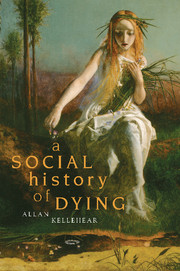Book contents
- Frontmatter
- Contents
- Acknowledgements
- Introduction
- Part I THE STONE AGE
- Part II THE PASTORAL AGE
- Part III THE AGE OF THE CITY
- Chapter Seven The Rise and Spread of Cities
- Chapter Eight The Birth of the Well-Managed Death
- Chapter Nine The Third Challenge: Taming Death
- Part IV THE COSMOPOLITAN AGE
- Conclusion
- Bibliography
- Index
Chapter Nine - The Third Challenge: Taming Death
Published online by Cambridge University Press: 22 September 2009
- Frontmatter
- Contents
- Acknowledgements
- Introduction
- Part I THE STONE AGE
- Part II THE PASTORAL AGE
- Part III THE AGE OF THE CITY
- Chapter Seven The Rise and Spread of Cities
- Chapter Eight The Birth of the Well-Managed Death
- Chapter Nine The Third Challenge: Taming Death
- Part IV THE COSMOPOLITAN AGE
- Conclusion
- Bibliography
- Index
Summary
Death has always had a propensity to frighten people. So it didn't help that in the sequestered social life of cities its meanings were often ambiguous as well. Peasants and early farmers could draw from the daily round of life-and-death images of animals and crops for their folk songs, sayings and metaphors. City people struggled to find these pastoral images relevant or validating for their experiences. The resigned attitude or philosophy of some peasant and farming cultures also broke with the urban elite's more instrumentalist and active approach to problem-solving. And death was a big problem for them.
In many ways, science and medicine are obvious examples of our longstanding attempts to tackle the problems not just of illness, disability and the burden of heavy physical work but also of premature death, difficult dying and the pain of loss. Medical research has devoted itself not simply to curing but also to caring. When death was unavoidable, doctors attempted to alleviate distress as best as they could according to their own time and place. The extension of their pastoral role for individuals and family later transformed itself into modern talking arts such as psychiatry, psychoanalysis and health education.
The distress of dying has attracted a long medical tradition of palliative arts and sciences, now somewhat formalised and collected together under the modern rubric of ‘palliative medicine’. Equally, the distress of dying prematurely or in organisational chaos has seen less lengthy but no less earnest efforts at legal and administrative ‘palliation’.
- Type
- Chapter
- Information
- A Social History of Dying , pp. 169 - 188Publisher: Cambridge University PressPrint publication year: 2007



